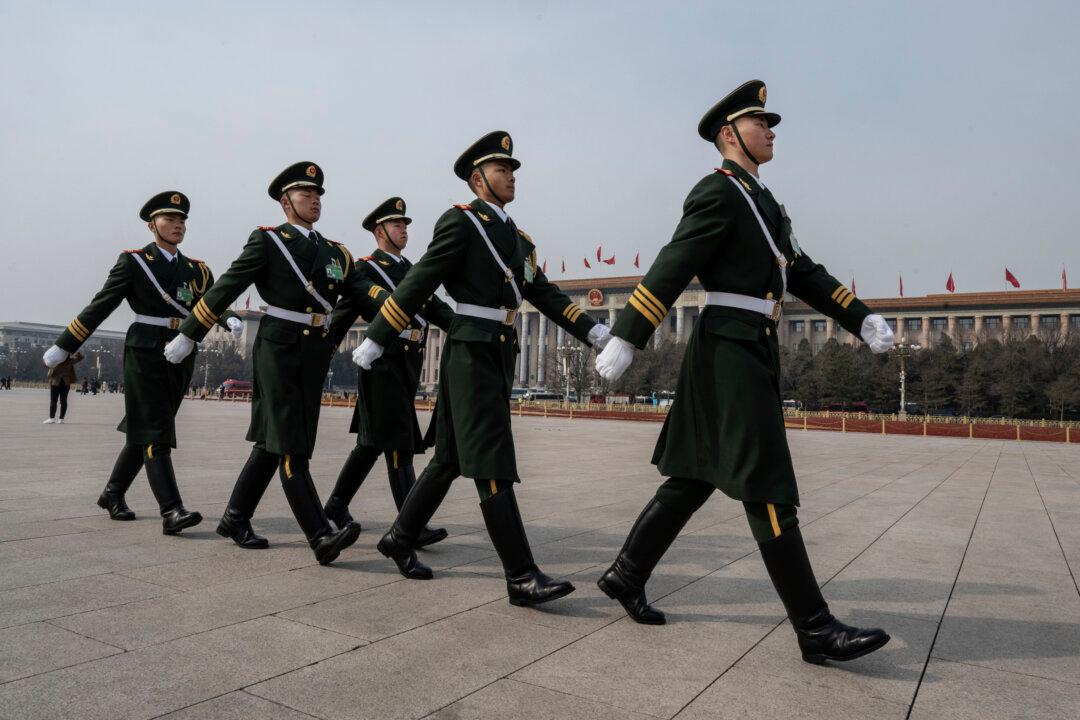Countering Chinese communist propaganda is an imperative for the United States and others.
Introduction
From the founding of the People’s Republic of China (PRC) in 1949 to the present day, as directed by Mao himself and his successors to include current leader Xi Jinping, the CCP has been waging a highly-coordinated propaganda campaign against America and the world. Communist China has invested vast resources in conducting information and psychological warfare against its perceived adversaries and also its own people, using the entire panoply of state-run media outlets, television, radio, and social media in a highly synchronized manner to achieve the CCP’s political objectives.Mao’s original propaganda focus was domestic in order to consolidate the CCP’s control of the government and all aspects of Chinese life. As China began to turn outward after Mao’s death in 1976, CCP propaganda targeted at influencing foreigners was added to the mix.
There are a number of important CCP bureaucracies that control all Chinese media. The main organization is the Publicity Department of the Central Committee of the CCP, also known as the Central Propaganda Department (CCPPD), which monitors all media personnel and controls via licensing constraints the content of print and visual media in all Chinese media. The CCPPD oversees the National Radio and Television Administration (NRTA), which controls and issues mandatory guidelines for media content for all state-owned enterprises engaged in television and radio, and the General Administration of Press and Publication, which regulates and distributes news, print, and internet publications in China.
Ironically, SCIO is also called the “Central Office of Foreign Propaganda.”

CCP Propaganda: Purposes and Methods
The purposes of CCP propaganda include the following:• Control the narrative(s): ensure the CCP line prevails at all costs. • Censor the truth (remarks attributed to Nazi propaganda minister Joseph Goebbels: “Truth is the enemy of the state”). • Preserve the CCP’s ruthless and self-serving grip on power (this is job number one for the CCP). • Reinforce the government’s “right to decide”—only the CCP can determine courses of action. • Advance the government (CCP) agenda. • Drown out the truth (through consistent, coordinated, and repetitive messaging). • Brainwash the masses (through psychological warfare and conditioning to “accept” the CCP narrative, whatever it happens to be at the moment). • Enhance stability and the status quo. The CCP prefers and promotes stability as a means to preserve its political power; all dissent—which could lead to instability—is ruthlessly crushed, and constant domestic propaganda is a tool regularly employed to promote stability.
CCP propagandists use a variety of methods to achieve the above objectives. The first is the use of the big lie and small lies.The big lie entails a claim that is so preposterous as to be virtually unbelievable by rational people. An example of this is the continuing CCP claim that the SARS-CoV-2 virus originated outside China, with the corollary that any reference to the virus as the “China virus” is racist.
Small lies are woven in a virtual web to reinforce the given big lie. In this example, small lies include quoting “friendly foreigners” (especially in Western media) who support the discredited zoonotic theory of the virus’s origin, blame-shifting to other countries (particularly the United States), emphasizing the supposed success of China’s “zero-COVID” policy, using CCP-controlled international entities such as the World Health Organization to advance the CCP’s virus narrative, among other things.
The big lie and its reinforcing small lies are repeated endlessly without deviation—as repetition is a key feature of making propaganda work. The more times the message is repeated, the more likely it becomes accepted truth over time—particularly when the pushback is diffuse or nonexistent. Hold that thought!

Other CCP propaganda methods are technical in nature: manipulation of video, exploitation of fake social media accounts, and the use of artificial intelligence to manage networks of social media bots and trolls that reinforce the CCP’s narratives.
Another key CCP propaganda method is to bastardize commonly understood Western terminology in order to convey a false sense of legitimacy in the Chinese characterization of the terms. Chinese state-run media—as well as Xi and his diplomatic corps—all frequently use the phrase “with Chinese characteristics” to obfuscate and corrupt the real meaning of the words they bleat in order to convince the world that the CCP is “benign.”
• Socialism “with Chinese characteristics.” • Multilateralism “with Chinese characteristics.” • Whole-process democracy “with Chinese characteristics.” • Global governance “with Chinese characteristics.” • Human rights “with Chinese characteristics.”
All of the above phrases mask the realities and the real definitions of the following terms:• Not a dime’s difference between Chinese socialism and Soviet or North Korean socialism. • Multilateralism under Chinese leadership. • Whole-process democracy is gobbledygook, as the CCP controls the entire political process in China. • Global governance under Chinese totalitarian leadership. • Human rights in China amount to genocide and repression of ethnic and religious minorities.
Unfortunately, the CCP’s relentless repetition of the phrase “with Chinese characteristics” to define commonly understood terms has convinced a lot of people that the CCP is “benevolent” and has adopted Western principles and methods. This is the essence of successful psychological warfare: to convince adversaries/others to accept the propaganda without question.Conclusion
Mao recognized the value of propaganda in controlling the masses from the very beginning of his rise to power in China. And Beijing has elevated propaganda to an artform over the years with an enormous investment in manpower and money, as well as support from CCP leadership.The increasing belligerence and aggression displayed by Xi’s government and his apparatchiks warrants a coordinated and disciplined response to CCP propaganda. The elements of such a network exist and could be integrated through enlightened leadership and vision. This will be discussed in part II of this series.





